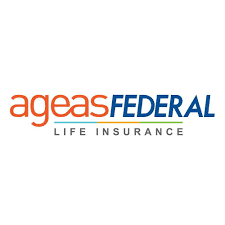How to Invest in Child Education Plans?
Investing in a child's education is an invaluable gift that parents can provide. As the cost of education continues to escalate, careful planning and financial preparation are essential to ensure your child's educational aspirations are met. Child education plans offer a structured and strategic approach to building a corpus that will cover the expenses associated with your child's education. By investing in these plans, parents can ensure that financial constraints do not hinder their child's academic journey. In this comprehensive guide, we will explore the key factors to consider and provide a step-by-step roadmap on how to invest wisely in child education plans.
Table of Contents
- Understanding Child Education Plans
- Assessing Your Child's Educational Needs
- Researching and Comparing Child Education Plans
- Choosing the Right Child Education Plan
- Investment Options within Child Education Plans
- Understanding Tax Benefits
- Monitoring and Reviewing Your Investment
- Conclusion
- Frequently Asked Questions (FAQs)
Understanding Child Education Plans
Child education plans are investment instruments designed to accumulate funds for a child's future education. These plans typically combine savings and investment components, enabling parents to build a corpus over a specified period. The funds can be utilised for various educational expenses, including tuition fees, books, accommodation, and more.
When considering child education plans, it's important to understand that they come in different variations. Some plans are unit-linked insurance plans (ULIPs), which provide both insurance coverage and investment options, while others are pure investment plans without any insurance component. It is essential to evaluate your needs and preferences before choosing a plan.

Assessing Your Child's Educational Needs
Before investing in a child education plan, it is crucial to evaluate your child's educational goals and the associated expenses. Consider factors such as the desired course, the location of the educational institution, and the potential cost of living. By estimating future costs, you can determine the required corpus and plan your investments accordingly.
It's important to consider not only the cost of primary education but also higher education or specialised courses your child may pursue. Additionally, factor in inflation and other potential expenses such as extracurricular activities, study abroad programs, and living expenses. This comprehensive assessment will help you set realistic goals and make informed investment decisions.
Researching and Comparing Child Education Plans
Thorough research and comparison of different child education plans available in the market are essential steps in the investment process. Look for plans offered by reputable insurance companies and consider factors like the plan's flexibility, tenure, returns, charges, and benefits. Use online comparison tools and consult financial advisors to make an informed decision.
While researching, consider the historical performance of the plans, the reputation of the insurance company, and the customer reviews. Look for plans that offer transparency, clarity in terms and conditions, and responsive customer support. Ensure that the plans comply with the guidelines set by the Insurance Regulatory and Development Authority of India (IRDAI).
Choosing the Right Child Education Plan
When selecting a child education plan, ensure it aligns with your investment goals and risk appetite. Consider factors such as the plan's lock-in period, flexibility to change the premium payment term, policy maturity options, and the inclusion of insurance coverage. Understand the policy terms and conditions, including exclusions and the claim settlement process.
Additionally, assess the charges associated with the plan, such as premium allocation charges, policy administration charges, and fund management charges. It's important to choose a plan that offers a good balance between charges and benefits, ensuring optimal growth of your investment.
Investment Options within Child Education Plans
Child education plans offer various investment options, such as equity funds, debt funds, and balanced funds. It's important to understand the risk and return profiles of these options to make an appropriate investment choice.
Equity funds have the potential for higher returns but come with higher market-related risks. Debt funds are relatively safer with lower risk but may offer lower returns. Balanced funds aim to strike a balance between equity and debt, offering moderate risk and returns. Some plans also provide the option to switch between funds based on market conditions and your risk tolerance.
Understanding Tax Benefits
Child education plans may offer tax benefits under Section 80C and Section 10(10D) of the Income Tax Act, 1961. The premiums paid towards the plan are eligible for tax deductions, and the maturity proceeds are tax-free. However, it is advisable to consult a tax professional or refer to the official website of the Income Tax Department for the latest information.
Section 80C allows for a deduction of up to Rs. 1.5 lakhs per year on the premium paid towards the child education plan. This deduction is subject to certain conditions and overall limits applicable to all eligible investments under Section 80C. Section 10(10D) ensures that the policyholder's maturity proceeds, including bonuses, are tax-free.
Monitoring and Reviewing Your Investment
Once you have invested in a child education plan, it is important to monitor and review its performance periodically. Stay updated on the plan's value, returns, and charges. Evaluate the progress towards your target corpus and make adjustments if necessary. Regularly reviewing your investment will help you stay on track to achieve your child's educational goals.
Keep an eye on the market conditions and the performance of the investment options chosen within the plan. If necessary, consider reallocating funds or switching to different investment options to optimise returns. Stay informed about any changes or updates related to the plan and the insurance company.
Conclusion
Investing in child education plans is a strategic and responsible approach to secure your child's educational future. By understanding your child's educational needs, researching available plans, choosing the right investment options, and monitoring your investment, you can ensure that you are well-prepared to meet the rising cost of education.
Child education plans offer a structured and disciplined way to save and invest, allowing you to build a substantial corpus over time. These plans not only provide financial security but also instil financial discipline and help you stay focused on your child's educational goals. By starting early and investing consistently, you can take advantage of the power of compounding and significantly impact your child's future.
Frequently Asked Questions (FAQs)
Q1. Can I avail a loan against a child education plan?
Some child education plans may offer the option to avail a loan against the policy's surrender value. The terms and conditions for availing a loan may vary between insurance companies and specific plans. It is advisable to check with the insurance company for the loan facility and its terms.
Q2. Can I make partial withdrawals from the child education plan during the policy tenure?
Many child education plans allow partial withdrawals during the policy tenure. However, there may be certain conditions and limits associated with such withdrawals, such as a minimum lock-in period or a minimum value of the policy. Review the terms and conditions of the plan to understand the provisions for partial withdrawals.
Q3. What happens to the child education plan if the policyholder passes away?
In the event of the policyholder's demise, the child education plan typically continues, and the future premiums may be waived off. The insurance company continues to manage the investments, and the benefits are paid out as per the policy's terms and conditions. Consult the policy documents or contact the insurance company for specific details.
Q4. Can I change the premium payment frequency in the middle of the policy term?
Some child education plans may allow you to change the premium payment frequency, subject to certain conditions. However, it is advisable to check the terms and conditions of the plan and consult with the insurance company regarding any changes to the premium payment frequency.
Q5. Are child education plans the only option to save for my child's education?
No, child education plans are not the only option to save for your child's education. Other investment instruments, such as mutual funds, fixed deposits, and public provident funds (PPF), can also be considered. Each option has its own features, benefits, and risks, so it's important to evaluate them based on your investment goals and risk tolerance.
Also Read:




























